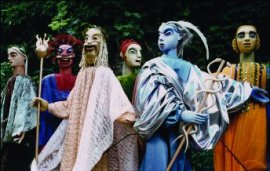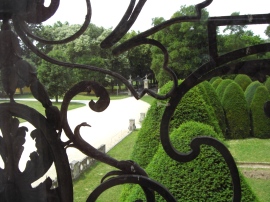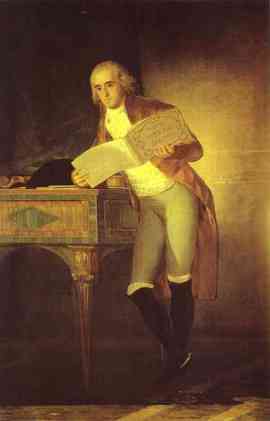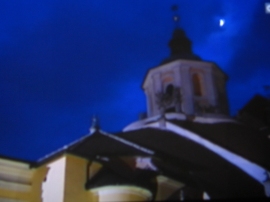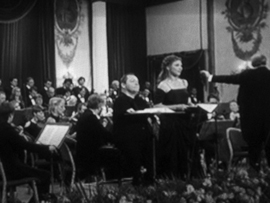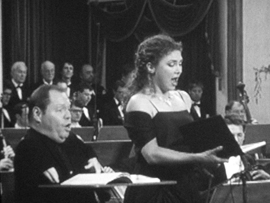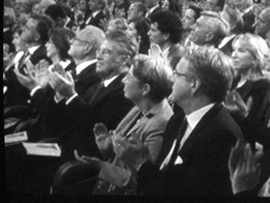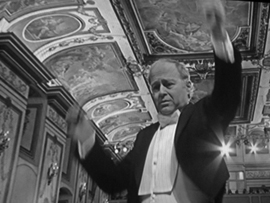200 Years, Anniversary Joseph Haydn (1732-1809)
haydnmania: the 2009 anniversaryArchive for Joseph Haydn
what happend today (236 years ago!):
Sept 2, 1773:
PHILEMON UND BAUCIS – Joseph Haydn’s Marionette Opera had premiere at Esterháza (now known as Esterházy Palace, at Fertöd, Hungary)
more:
“If I want to hear good opera I must come to Eszterháza,” Maria Theresa is supposed to have said, giving a somewhat misleading impression. In fact she was there on only one occasion, for the first two days of September 1773. The large scale celebrations were written up in local newspaper reports. On the first day there was a banquet (at which three gamebirds killed by Haydn with one shot were on the Empress’s plate), the inspection of the Park, a performance of Haydn’s opera “L’infedeltà delusa” in the opera house, followed by a fancy-dress ball which lasted till dawn. During an intermission in the ball the Prince showed the imperial party his new Chinese Pleasurehouse. The walls were covered with mirrors which reflected the light of innumerable Chinese lanterns and candles. Haydn and the orchestra played a symphony and other works. The main ball took place in a 130 foot long Chinese gallery adjoining the opera house. Eleven chandeliers and 600 candles illuminated the room and the musicians were dressed in Chinese costume. It was the stove in this room that exploded in 1779 causing the fire that completely destroyed the first opera house and, far worse, all the music and parts of the operas written to date with the exception of the scores that Haydn had fortuitously taken to his living quarters some half mile away (still preserved).
The next evening’s entertainment started with Haydn’s specially composed marionette opera “Philemon und Baucis”, or “Jupiter’s journey to Earth”. This could well have been the official opening of the marionette theatre, which, unlike the rebuilt opera house and the Chinese Pleasurehouse, still can be seen, although now used for agricultural purposes. The auditorium was flanked on both sides by caves domed with rockery and sea shells in the fashionable rocaille style. Some of the caves were embellished with fresco paintings, others with miniature fountains.
The puppet opera was followed by a festive supper after which the Prince led the Imperial party through an avenue illuminated with coloured Chinese lanterns to the site of a spectacular firework display. Once seated the Empress lit the first fuse. After the fireworks an outdoor ball took place in a specially prepared arena, lit by more than 20,000 Chinese lanterns and with over a thousand young peasants performing local dances.
The opera was repeated at Eszterháza in 1776, presumably with a less elaborate final tableau, and was then available as two pieces, the prologue on Olympus as “Der Götterrat” and the main opera as “Philemon und Baucis”. At some time in the 19th century the music disappeared completely, though the printed libretto survived. In 1935 a manuscript score from about 1800 of the main opera was discovered in a Paris bookshop, without the prologue and without the final chorus, but with a lot of extraneous material by other composers that could be discarded thanks to the existence of the libretto. Music from earlier in the opera is repeated for the final chorus. It is generally agreed that the first two movements of Symphony No. 50 were the original overture to the prologue. H. C. Robbins Landon prepared a performing version and produced the first recording in Vienna in 1951.
The tale of Philemon and Baucis appears in Book 8 of Ovid’s Metamorphoses. Two tree trunks grow together in a walled enclosure on a hilltop, surrounded by a swamp, in Phrygia. The story is that the gods destroyed the village but left a temple with the old couple to look after it. Their one wish was to die together when their time came and they were transformed into an entwined oak and a lime. The libretto Haydn set is based on a play by the blind Alsatian poet and teacher, Gottlieb Konrad Pfeffel, presumably found and adapted by the Esterházy librarian, Philipp Georg Bader. Gounod composed a version of the story in 1860. In this very French operetta Baucis asks for the return of her youth, Jupiter falls in love with her and a second wish returns her to Philemon and safe old age.
the Haydn Church
Here a video introducing the Haydn Church in Eisenstadt, where Haydn worked – and, at least is buried in the “Haydn Mausoleum”:
Haydn at Esterháza (Fertöd, Hungary)
“…Well, here I sit in my wilderness – forsaken – like a poor waif – almost without any human society – melancholy – full of the memories of past glorious days – yes! past alas! – and who knows when these days shall return again? Those wonderful parties? Where the whole circle is one heart, one soul – all these beautiful musical evenings – which can only be remebered and not described – where are all these enthusiastic moments? – all gone – and gone for a long time…”
This is the beginning of one of Haydn’s remarkable letters, written to Maria Anna von Grenzinger in February 1790 shortly after his return to Eszterháza from the Christmas season in Vienna. This letter contains a rare glimpse of Haydn out of livery as “Capellmeister of His Highness the Prince (Esterházy) in whose service I live and die”, as Haydn had styled himself in another well-known letter, his autobiography of 1776.
When Baron Riesbeck visited Esterháza in the 1780s he observed that “The Neusiedler See, from which the castle is not far removed, makes miles of swamp and threatens in time to swallow up all the land right up to the Prince’s dwelling.” When Haydn used the term Einöde to refer to Esterháza he was perhaps translating the Hungarian term for the marshy plains of the area – puszta, which means “wilderness”.
Haydn’s life at Esterháza apparently hinged on extremes of luxury and privation. Descriptions of the Hungarian Paradise invariably dwell on the lavish furnishings, exquisite collections, and dazzling theatrical entertainments that won it so many accolades.
At Esterháza Haydn lived with the other musicians, singers and traveling players in the Musicians’ Building, a two stried building of 250 rooms. It was from his appartment there that he wrote his letters to von Genzinger.
link to my article “visiting Esterháza Palace”
visiting Esterhàza Palace (Fertöd, Hungary)
Whow, what an impressive ensemble: Esterháza Castle, at Fertöd, Hungary (google map) – just half an hour to go, from the Austria-Hungarian border at Sopron!
1767 Prince Nikolaus (later called “the Magnificent”) visited Versailles and became inspired to build this Castle – on a place that, at this time, was “in the middle of nowhere”.
1768 also a Opera house was built there – the first performance was Haydn’s opera “Lo speciale”.

the 2 scultptures (here the model) of Haydn (left) and the Prince Esterházy (up on the balcony) will be built in bronce next year.
The most famous and importend people of the aera have spent time here, e.g. Empress Maria Theresia loved to be a guest in Esterháza, ’cause “…if you want to listen to the best music you have to go to Esterháza…”.
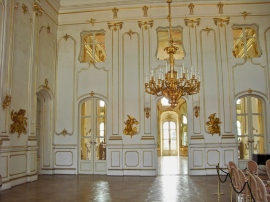

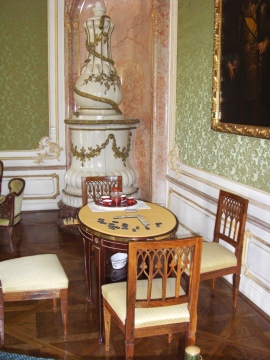
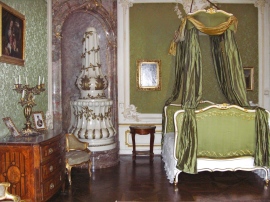
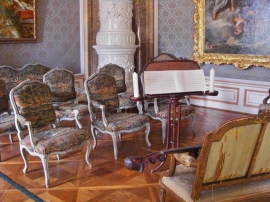
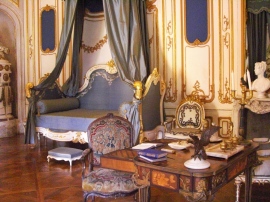
the male’s (prince’s) bedroom with the “secret” door:

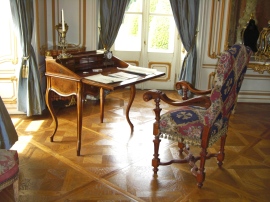
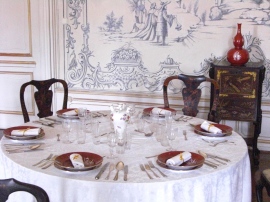
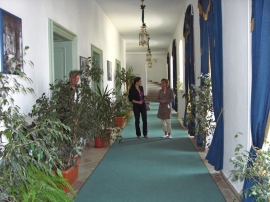
What I have to mention: all the people working in Esterháza were overwhelming friendly and gracious (special thanks to Erna and Tünde!), tried very patiently to answer all our questions and celebrated great hospitality. At least we spent more than 5 hours (!) there – and did not see yet the gigantic historic gardens!
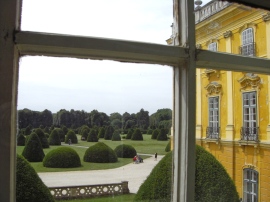
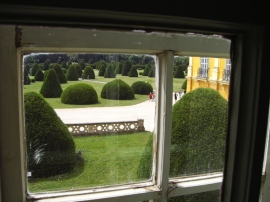
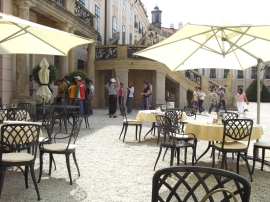
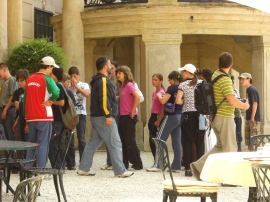
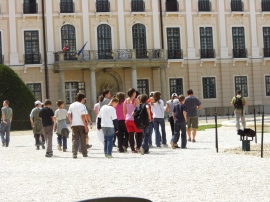
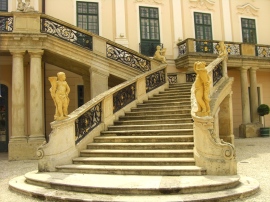
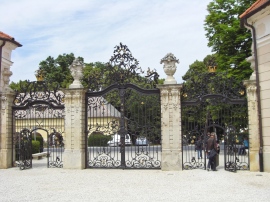
Prince Paul Anton still lives there, although the Esterháza Palace today belongs to the National Administration Departement of Historical Buildings.
Enjoy a visit there! And one of the exhibitions or one of the many concerts during the Haydn-anniversary-year!
On saturday, august 8, 2009 the opening event of an extraordinary exhibition of contemporary art starts at Esterháza Castle:

Andreas Roseneder: “Haydn reloaded” – a modern painters view on the genius, his life and works and his surrounding. New paintings and objects as result of Roseneder’s artwork about Haydn.
link: www.mag.hu
international fame at lifetime: J.H.!
One of the most eloquent visual illustrations of Joseph Haydn’s international fame was Goya’s magnificent portrait of the Spanish Duke of Alba holding a book of Haydn’s Four Songs with Pianoforte Accompaniment, now in the Prado.
Haydn & Bach
Haydn ventured into a bookshop and asked for a good textbook on theory. The bookseller named the writings of Carl Philipp Emanuel Bach as the best and most recent. Haydn wanted to look and see for himself. He began to read, he understood, found what he was looking for, paid for the book, and took it away thoroughly pleased. That Haydn sought to make Bach’ s principles his own, that he studied them untiringly, is apparent even in his youthful works from that period. From his nineteenth year Haydn wrote quartets which gave him a reputation among lovers of music as a profound genius, so quickly had he learnt. As time went on, he acquired Bach s later writings. In his opinion Bach’s writings form the best, most thorough and most useful textbook ever published.
As soon as Haydn s musical output became available in print, Bach noted with pleasure that he could count Haydn among his pupils. He later paid Haydn a flattering compliment; that Haydn alone had understood [Bach’s] writings completely and had known how to make use of them.
from: AC Dies, Biographische Nachrichten von Joseph Haydn, Vienna, 1810, R/Berlin, 2nd edition, 1962, pp. 40f.
The dark, dramatic, improvisation-like passages that appear in some of Mozart’s and Haydn’s works are due in part to the influence of Carl Philipp Emanuel Bach’s work.
on arte-tv: Haydn, the misjudged genius
Yesterday, at 6 a.m (!), in the early sunday morning, arte-tv showed a great documentation about Joseph Haydn.
The stream is no longer online, but during the next time there’ll be other Haydn-films and Haydn-concerts on arte-tv, and audio-music files to listen.
Link: Hommage an Joseph Haydn (german & francais)
The next 6 a.m. (!) – concert will be on friday, may 29:
“Haydn der Symphoniker” – all about Haydn’s Symphonies, with music from Haydn, performed by the RSO Stuttgart, conducted by Sir Roger Norrington.

